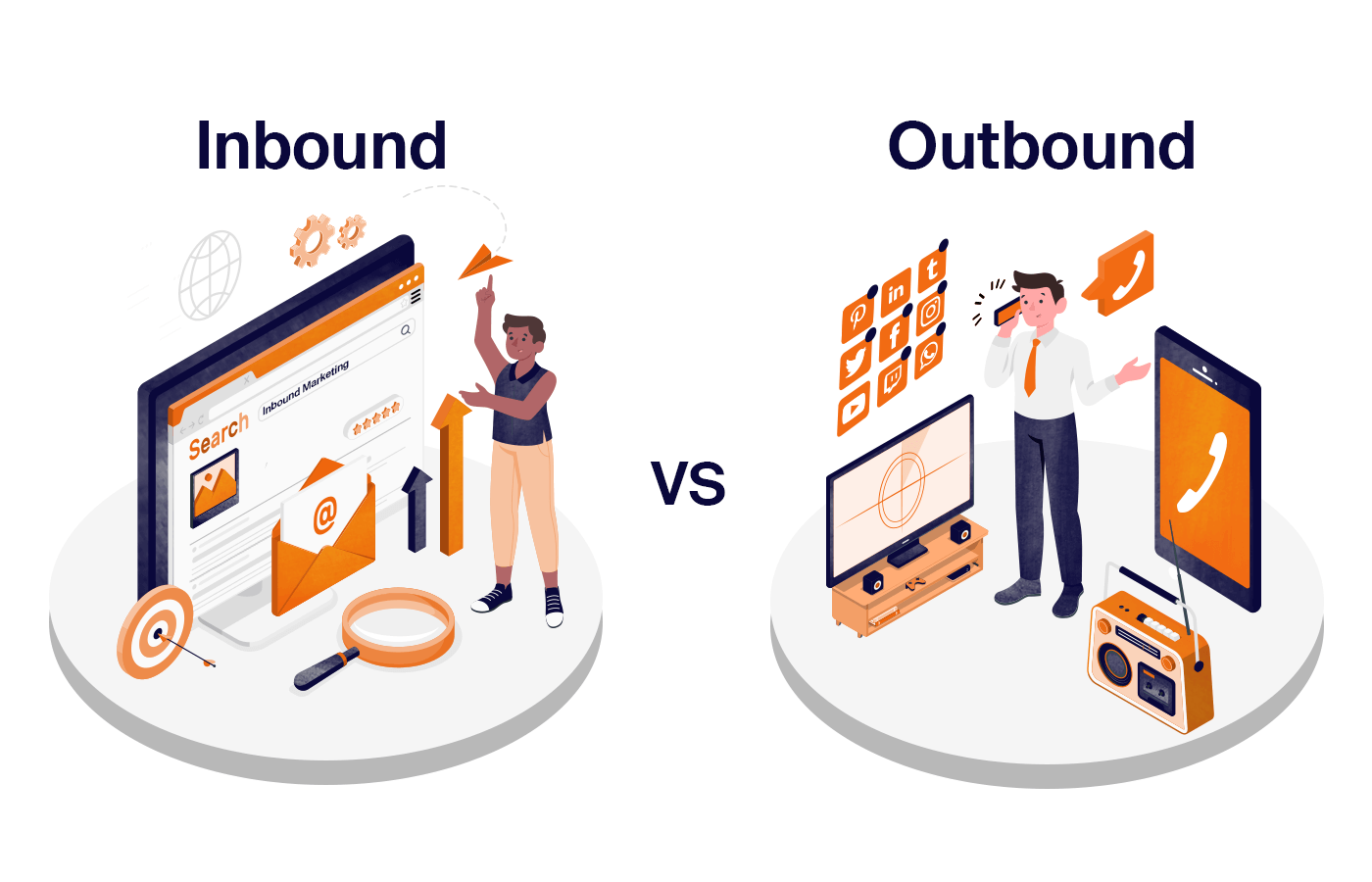
Understanding the differences between Inbound vs Outbound Marketing is crucial for businesses navigating the digital landscape. Both strategies offer unique benefits and, when used correctly, can significantly boost a company’s visibility and customer engagement. At Digi Swarm, we help brands strategically decide between Inbound vs Outbound Marketing based on their goals, audience, and industry trends.
Summary
This article explores the key differences between Inbound vs Outbound Marketing, outlining their approaches, benefits, and limitations. Inbound marketing focuses on attracting customers through valuable content and SEO, while outbound marketing pushes messages through ads and direct outreach. By comparing their cost-efficiency, engagement levels, and strategic fit, the article helps businesses determine which method aligns best with their goals. Partnering with a reliable agency like Digi Swarm, recognized as a best digital marketing company, ensures your marketing strategy is tailored, impactful, and future-ready.
What is Inbound Marketing?
Inbound vs Outbound Marketing strategies differ primarily in how they approach the customer. Inbound marketing focuses on attracting potential customers by creating valuable content and experiences tailored to them. Instead of pushing products, it pulls people in through blogs, social media, SEO, and email marketing.
In the context of Inbound vs Outbound Marketing, inbound is customer-centric. It aligns with modern consumer behavior—people prefer researching online before making a purchase. By optimizing content for search engines and offering useful information, businesses can build trust and nurture long-term relationships.
What is Outbound Marketing?
On the other hand, Outbound marketing refers to traditional promotional methods where messages are pushed out to a broad audience. This includes TV ads, cold calls, direct mail, and display advertising.
When comparing Inbound vs Outbound Marketing, outbound often appears more aggressive. While it can still be effective—especially for reaching large audiences quickly—it tends to interrupt the consumer journey rather than complement it. Outbound is less targeted, which can lead to higher costs with lower ROI unless carefully managed.
Key Differences Between Inbound vs Outbound Marketing
The Inbound vs Outbound Marketing debate boils down to strategy, cost, audience engagement, and ROI.
-
Approach: Inbound is permission-based, while outbound is interruption-based.
-
Cost Efficiency: Inbound generally has a lower cost per lead over time.
-
Audience Engagement: Inbound encourages two-way communication; outbound is one-directional.
-
Longevity: Inbound content (like blogs) continues to generate traffic long after publishing. Outbound campaigns stop delivering once the ad spend ends.
Understanding these differences helps marketers make informed decisions about when and how to use either method or a combination of both.
Pros and Cons of Inbound vs Outbound Marketing
Inbound Marketing Pros:
-
Builds trust and credibility
-
Cost-effective over time
-
Attracts qualified leads
Inbound Marketing Cons:
-
Takes time to see results
-
Requires consistent content creation
Outbound Marketing Pros:
-
Fast results
-
Broad reach
-
Effective for product launches or time-sensitive offers
Outbound Marketing Cons:
-
Expensive
-
May be perceived as intrusive
-
Lower engagement and conversion rates
Evaluating the strengths and weaknesses of Inbound vs Outbound Marketing can guide you toward a more balanced and effective marketing plan.

Which Strategy Is Better for Your Business?
Choosing between Inbound vs Outbound Marketing depends on your business goals, audience, and resources. If you’re aiming for long-term growth, building authority in your niche, and earning customer trust, inbound may be the better option. However, if you’re launching a new product or need immediate visibility, outbound could give you the fast traction you need.
Often, the most successful businesses blend both approaches—using outbound for reach and inbound for nurturing. This integrated approach ensures you capture attention and then convert interest into loyalty.
Why It Matters in Today’s Market
The shift in consumer behavior has made Inbound vs Outbound Marketing a critical consideration for modern businesses. Consumers are more informed, and traditional methods alone no longer suffice. Brands must adapt by providing meaningful, relevant content while still leveraging the power of targeted advertising when necessary.
Staying competitive means understanding how Inbound vs Outbound Marketing align with today’s buyer journey. A strong inbound foundation supported by selective outbound campaigns can create a powerful marketing ecosystem.
Conclusion
In the evolving digital world, knowing the difference between Inbound vs Outbound Marketing can give your business a competitive edge. Each method has its place, and the right mix depends on your specific objectives. By working with a partner like Digi Swarm, you can develop a strategy that blends both models effectively and delivers measurable results.
Whether you’re investing in inbound strategies or exploring outbound opportunities, choosing the best digital marketing company ensures your campaigns are well-executed, data-driven, and customer-focused. Let Digi Swarm, the best digital marketing company, help you make the right decision in the Inbound vs Outbound Marketing journey.

